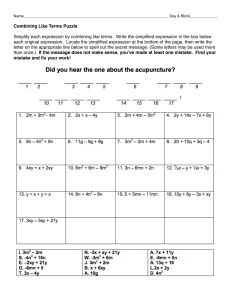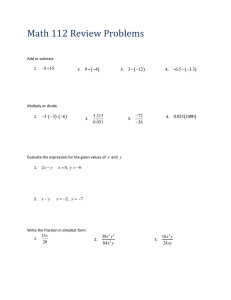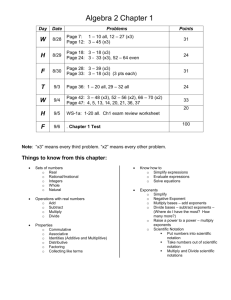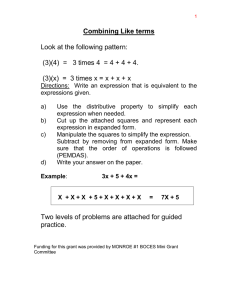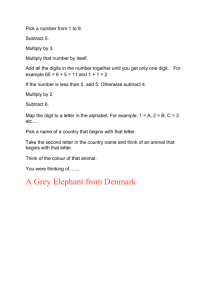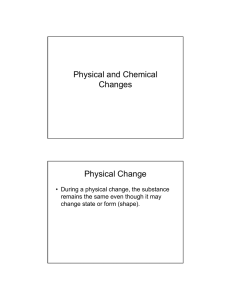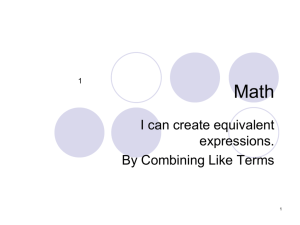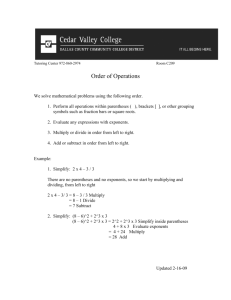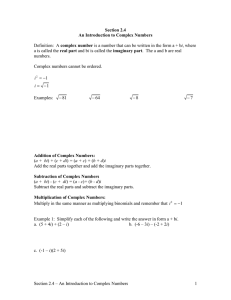3-3 Guided Notes
advertisement
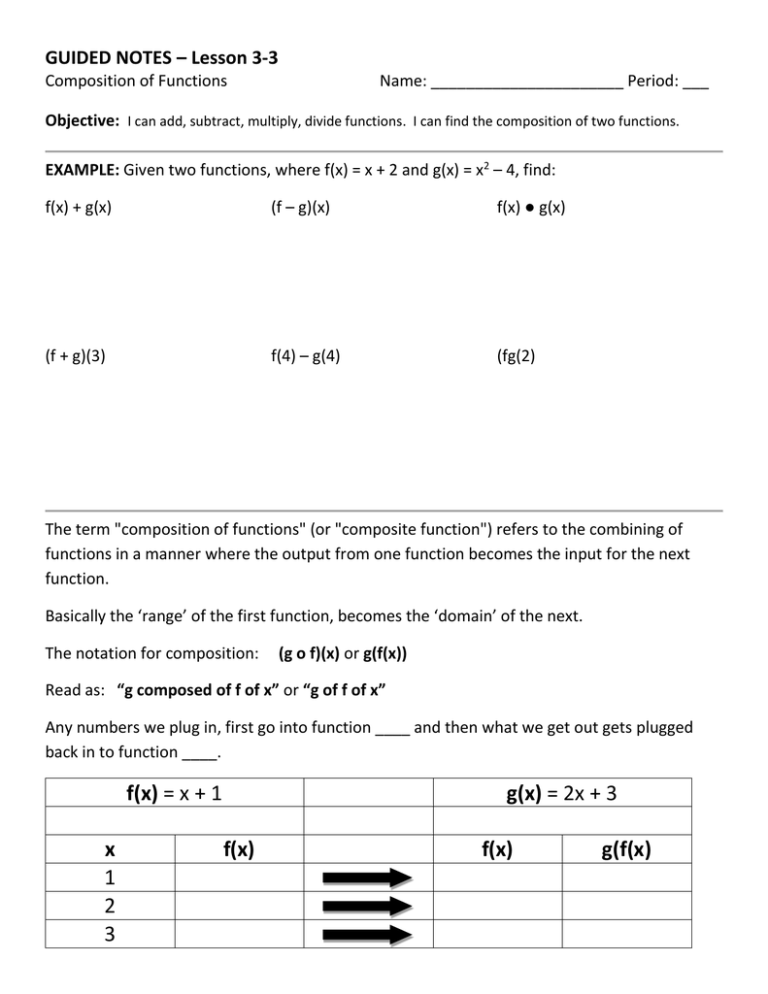
GUIDED NOTES – Lesson 3-3 Composition of Functions Name: ______________________ Period: ___ Objective: I can add, subtract, multiply, divide functions. I can find the composition of two functions. EXAMPLE: Given two functions, where f(x) = x + 2 and g(x) = x2 – 4, find: f(x) + g(x) (f – g)(x) f(x) ● g(x) (f + g)(3) f(4) – g(4) (fg(2) The term "composition of functions" (or "composite function") refers to the combining of functions in a manner where the output from one function becomes the input for the next function. Basically the ‘range’ of the first function, becomes the ‘domain’ of the next. The notation for composition: (g o f)(x) or g(f(x)) Read as: “g composed of f of x” or “g of f of x” Any numbers we plug in, first go into function ____ and then what we get out gets plugged back in to function ____. f(x) = x + 1 x 1 2 3 g(x) = 2x + 3 f(x) f(x) g(f(x) We can skip all the work by combining the functions together from the beginning. g(f(x)) where g(x) = 2x + 3 and f(x) = x + 1 start with g(x) replace the x with f(x) simplify EXAMPLES: Given: a(x) = 2x – 3 b(x) = 3x + 1 c(x) = x2 + 6 Determine the composition of functions: a(b(x)) b(c(x)) c(a(x)) a(c(3)) b(a(2)) c(b(5))

